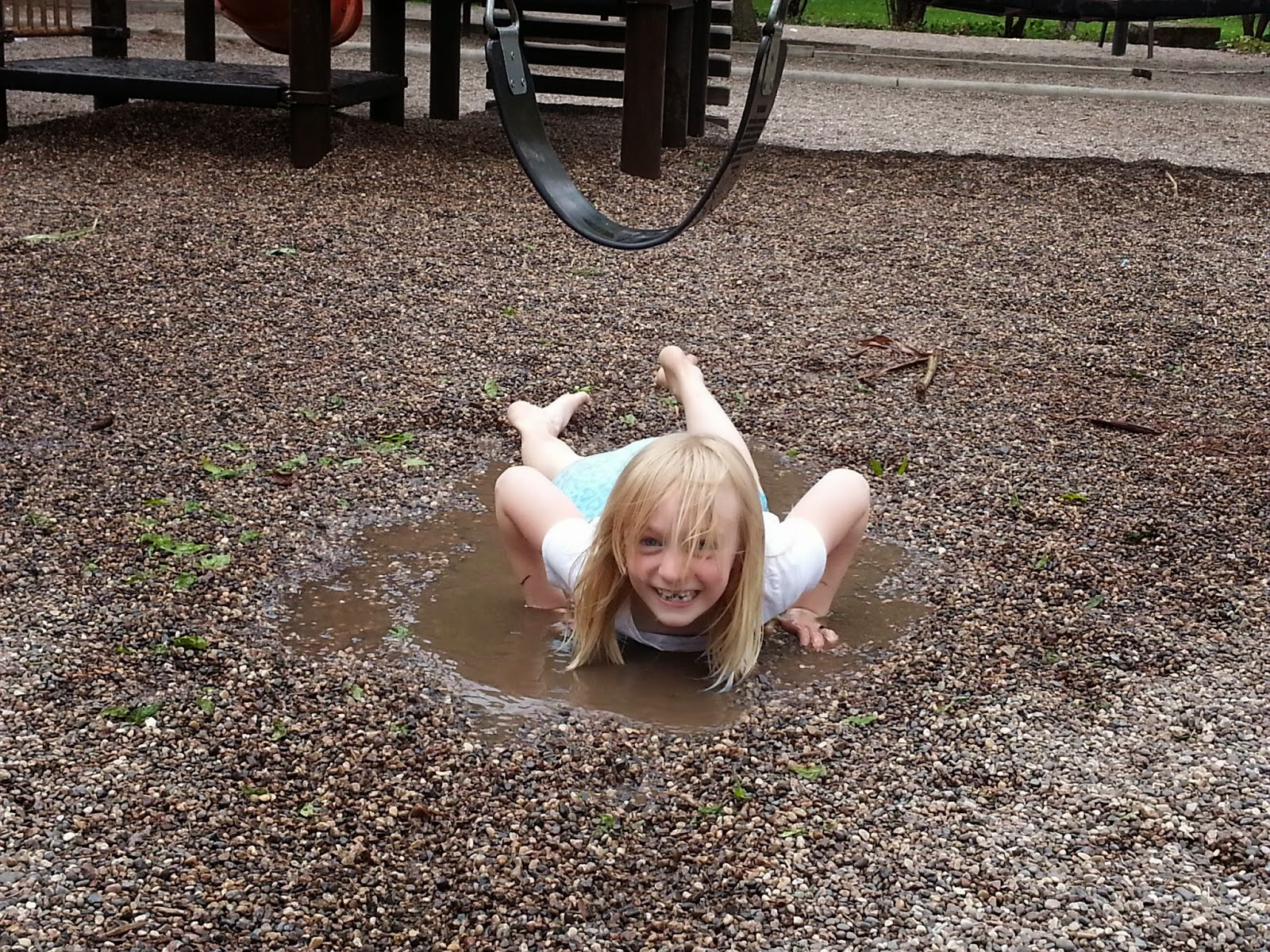 My daughter is a keen observer of all things living outdoors. She will squat for what seems like hours to watch the activity at an anthill, turn over garden stones to find slugs, perch in a tree waiting to get a picture of a squirrel, set a "chipmunk trap" using a pot and a string, or catch flies with a bucket. She knows how to do these things because she is fascinated by things outside of her control. She watches them, trying to learn how they function and why they behave as they do. I would argue that most young children, given the opportunity and the freedom, would do many of the same things.
My daughter is a keen observer of all things living outdoors. She will squat for what seems like hours to watch the activity at an anthill, turn over garden stones to find slugs, perch in a tree waiting to get a picture of a squirrel, set a "chipmunk trap" using a pot and a string, or catch flies with a bucket. She knows how to do these things because she is fascinated by things outside of her control. She watches them, trying to learn how they function and why they behave as they do. I would argue that most young children, given the opportunity and the freedom, would do many of the same things. I love watching young children in nature. For me it's like discovering the world all over the again. The surprise, the delight, the joy - they are so palpable. Children explore with all of their senses. How many children can resist jumping in a puddle? Is it because they want to get wet or messy? Perhaps. Maybe they are learning cause and effect. Maybe they want to make something happen. Maybe there's just something irresistible about standing water - the urge to touch it, splash it. Whatever the reason, there is joy in puddles. And in mud too!
I love watching young children in nature. For me it's like discovering the world all over the again. The surprise, the delight, the joy - they are so palpable. Children explore with all of their senses. How many children can resist jumping in a puddle? Is it because they want to get wet or messy? Perhaps. Maybe they are learning cause and effect. Maybe they want to make something happen. Maybe there's just something irresistible about standing water - the urge to touch it, splash it. Whatever the reason, there is joy in puddles. And in mud too! Most adults don't want to step in mud. It's dirty. It gets all over your shoes, maybe your pants too. But kids love it. They love the texture, the stickiness, the color, the way it feels and sounds and smells (I actually love the way mud smells too). Mud can be a great medium for creating. Mud can be used for building castles, cakes, sculptures, bowls. The consistency can be made thinner with water and mud can be used as paint on a sidewalk canvas.
Most adults don't want to step in mud. It's dirty. It gets all over your shoes, maybe your pants too. But kids love it. They love the texture, the stickiness, the color, the way it feels and sounds and smells (I actually love the way mud smells too). Mud can be a great medium for creating. Mud can be used for building castles, cakes, sculptures, bowls. The consistency can be made thinner with water and mud can be used as paint on a sidewalk canvas.The next time you are out in nature with a child, try to see the world as she sees it. Squat or sit down so you are closer to the ground. Try to engage your senses more. Pay attention to what you see, hear, smell, touch, and (if appropriate) taste. Follow the child's lead. You may be surprised at what you notice, what you learn, and what you wonder about. You might find yourself energized. And not so worried about those muddy shoes.
Literature Links
Some of my favorite mud/dirt/water picture books for children:
Red Rubber Boot Day, by Mary Lyn Ray
Wonderful Worms, by Linda Glaser
Wiggling Worms at Work, by Wendy Pfeffer
A Handful of Dirt, by Raymond Bial
One Small Square (series), by Donald Silver
Mudpies, by Claudia Little





